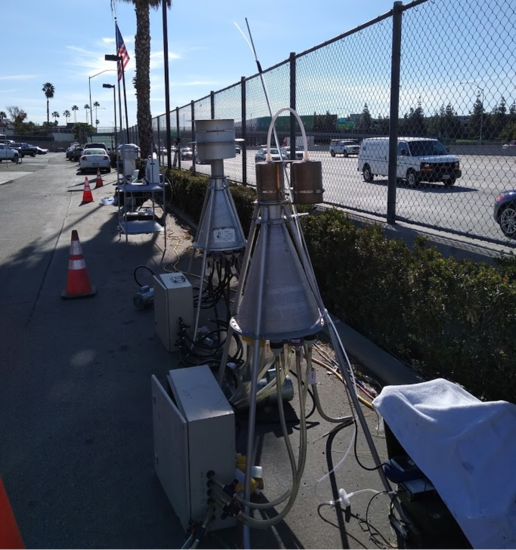Professor Heejung Jung and his team have recently conducted a field test in Anaheim and Long Beach, CA near Interstates 5 and 710 respectively to study brake and tire wear particulate matter (PM) in a project funded by California Air Resources Board (CARB).
Brake and tire wear PM presents a large fraction among non-exhaust particle emissions from vehicles. CARB’s legislative effort has resulted in much lower tailpipe (or exhaust) PM emissions over the years but has not affected non-exhaust PM emissions. Thus, non-exhaust sources, including brake and tire wear PM, have become larger contributors to traffic-related emissions as well as to ambient PM2.5 (particles less than 2.5 um) concentrations.

The measurement included online and offline sampling of air pollutants using multiple instruments and sampling methods: some conventional and others recent state-of-art instruments and methods. The main goal of the project is to understand chemical and physical nature of non-exhaust PM specifically brake and tire wear PM in the real-world measurement in comparison to well-controlled laboratory characterization. The team also aims to understand relationship between brake and tire PM emissions and traffic data.
The research team is composed of leading experts within and outside UC Riverside (UCR): Associate Researcher Guoyuan Wu of the Center for Environmental Research & Technology (CE-CERT) at UCR, Professor and Associate Dean Marko Princevac of UCR for atmospheric turbulence analysis, Professor Max Zhang at Cornell University for dispersion modeling, Professor Antony Chen at the University of Nevada, Reno for source apportionment analysis, and Professor Xiaoliang Wang at Desert Research Institute for off-line filter sampling and chemical analysis. Professor Shiraiwa from UC Irvine also took part in the field test with a separate funding to understand toxicity of brake and tire wear PM.
Professor Jung said it is exciting to be able to work with many experts and he is confident that the team will be able to advance understanding on non-exhaust PM at near-road environment through this project.
This article is from: UCR Mechanical Engineering News